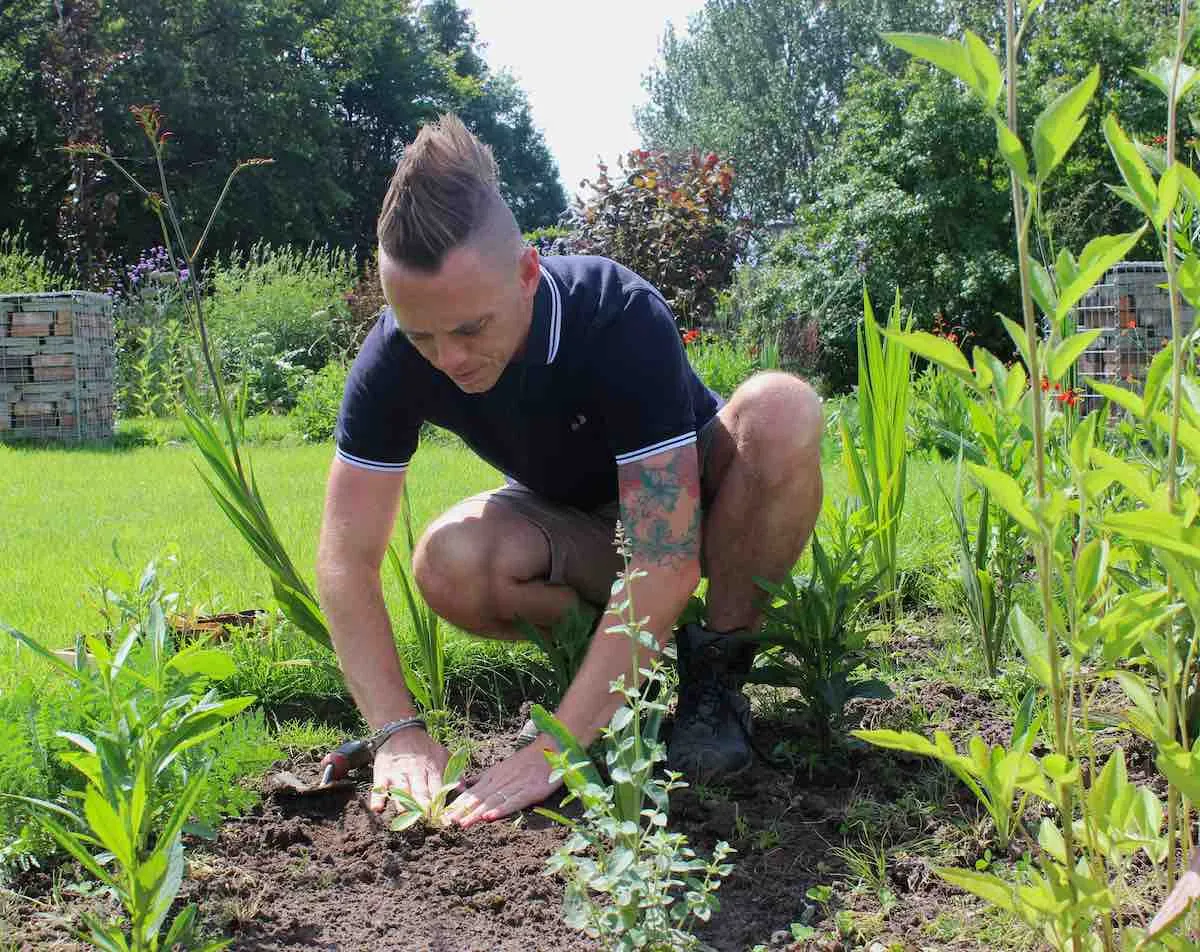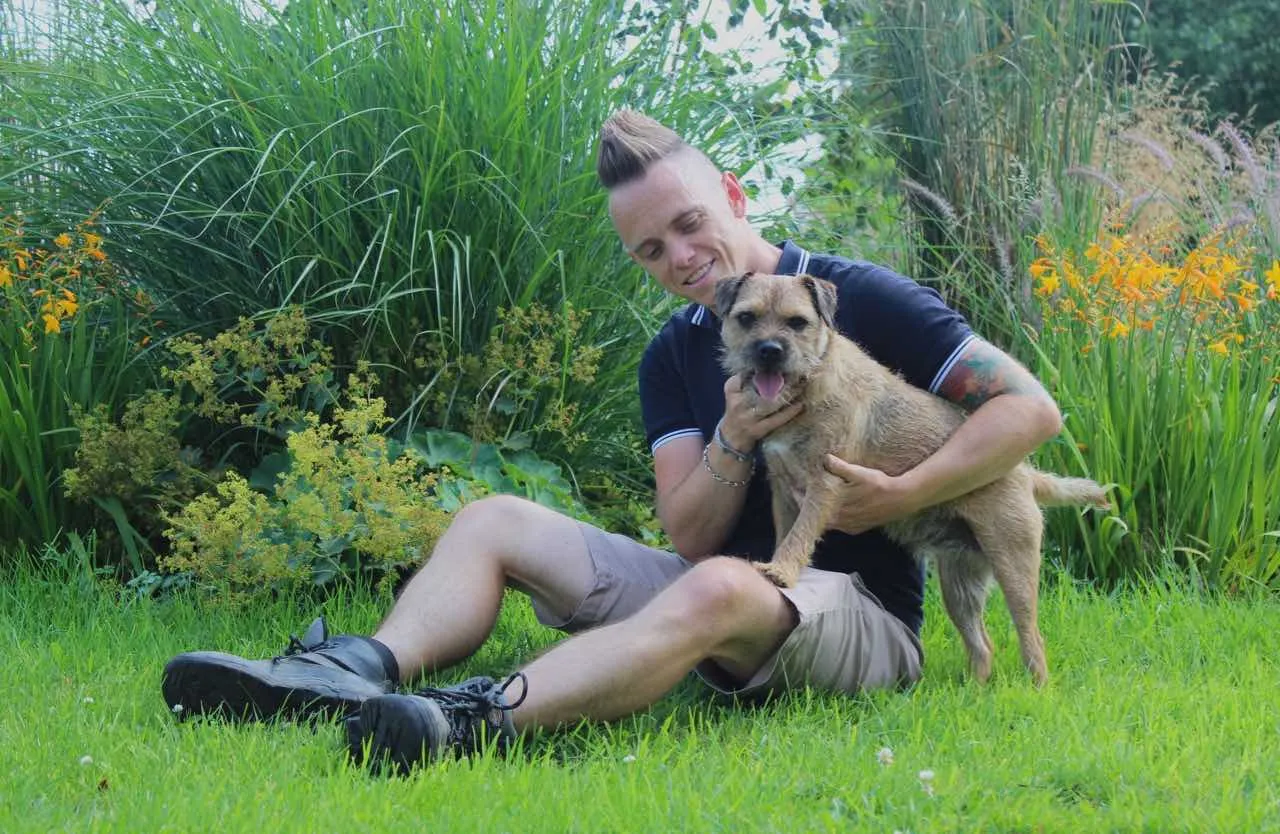Ask a Gardening Question Forum
 Lee Burkhill: Award Winning Designer & BBC 1's Garden Rescue Presenters Official Blog
Lee Burkhill: Award Winning Designer & BBC 1's Garden Rescue Presenters Official Blog

Welcome to the ultimate beginner gardening and garden design forum! Where no gardening question is too silly or obvious. This online gardening forum is run by Lee Burkhill, the Garden Ninja from BBC 1's Garden Rescue and a trusted group of experienced gardeners.
Whether you are a beginner or an expert gardener, it's a safe place to ask garden-related questions for garden design or planting. If you have a problem in your garden or need help, this is the Garden Forum for you!

Posting Rules: This space is open for all garden-related questions. Please be polite, courteous and respectful. If you wouldn't say it to your mum's face, then don't post it here. Please don't promote, sell, link spam or advertise here. Please don't ask for 'cheeky' full Garden redesigns here. They will be deleted.
If you need a garden design service, please use this page to book a design consultation. I will block anyone who breaks these rules or is discourteous to the Garden Ninja Community.
Join the forum below with your gardening questions!
Quote from harrywoody95 on 9th March 2025, 5:43 pmHi,
So this is a lawn I sowed myself 3 years ago. I've put a lot of hours and care into looking after it, I fertilise once or twice a year and mow regularly when it is actively growing. since the first year this lawn has had a few issues will yellow/green areas in the lawn. I have tried fertiliser, stabbing a fork all over it and giving it a wiggle to get it to drain better and dethatched it multiple times.
Here are some pictures of it today. this is after I have dethatched it. I have de thatched around 3 bags worth of thatch and it looks like I haven't touched it. The thatch that is left it attached at the root making it hard to get up with a garden rake.
I've done so much research on what I should do to help it and no matter what I've tried it hasn't solved the problem. dethatching has never really helped. I didn't notice a different after trying to aerate the roots and help drainage. and fertiliser really helps the green bit while the middle of the lawn doesn't seem to react to it as well, although it definitely does something it doesn't seem like a lack of nutrients is the problem either.
Any idea's would be greatly appreciated, this is the year i would really like a flourishing green vibrant lawn
Laid on top soil that was my own soil recycled and brought back to me (rocks and roots removed), seeds were a mix from miracle gro, fertiliser is a combination of granules and liquid from miracle gro (I don't use both at the same time and use either the liquid or granules twice a year max).
Thanks for reading
Harry
Hi,
So this is a lawn I sowed myself 3 years ago. I've put a lot of hours and care into looking after it, I fertilise once or twice a year and mow regularly when it is actively growing. since the first year this lawn has had a few issues will yellow/green areas in the lawn. I have tried fertiliser, stabbing a fork all over it and giving it a wiggle to get it to drain better and dethatched it multiple times.
Here are some pictures of it today. this is after I have dethatched it. I have de thatched around 3 bags worth of thatch and it looks like I haven't touched it. The thatch that is left it attached at the root making it hard to get up with a garden rake.
I've done so much research on what I should do to help it and no matter what I've tried it hasn't solved the problem. dethatching has never really helped. I didn't notice a different after trying to aerate the roots and help drainage. and fertiliser really helps the green bit while the middle of the lawn doesn't seem to react to it as well, although it definitely does something it doesn't seem like a lack of nutrients is the problem either.
Any idea's would be greatly appreciated, this is the year i would really like a flourishing green vibrant lawn
Laid on top soil that was my own soil recycled and brought back to me (rocks and roots removed), seeds were a mix from miracle gro, fertiliser is a combination of granules and liquid from miracle gro (I don't use both at the same time and use either the liquid or granules twice a year max).
Thanks for reading
Harry
Uploaded files:
Quote from Lee Garden Ninja on 11th March 2025, 7:53 amHi @harrywoody95
Thanks for your question about why your newly laid lawn isn't thriving! You have certainly put in all of the hard work with the feed, aeration and dethatching.
I think to be honest, this has been the undoing of some of your dream lawn plans. Looking at the rural field behind you, you have relatively decent soil. Then, looking at the grass, it looks quite thin and choked, as if it's overseeded, and with some moss. I would hazard a guess that all the feeding has led to an excess of nitrogen in the soil, which can actually stunt decent grass growth and cause very weak thin growth, which is what I'm seeing.
I can actually see where the lawn feed has been concentrated, which is where that light coloured 'lake' shape is in the middle, I would say that a lot of the feed has ended up pooling here through one route or another.
Ok I'm going to give you some advice that may shock you. Stop feeding the lawn this year. Overfeeding any plant, in particular large areas like lawns can cause more problems than they claim to solve.
Overfeeding a lawn can turn it yellow due to nutrient overload, particularly from excessive nitrogen. While nitrogen is essential for healthy, green growth, too much can actually harm the grass. Here's why:
1. Fertilizer Burn (Salt Buildup)
Most lawn feeds contain soluble salts that deliver nutrients. When too much fertilizer is applied, these salts build up in the soil, drawing moisture away from the grass roots. This causes dehydration at the root level, leading to scorched, yellowed blades — a condition known as fertilizer burn.
2. Root Damage
Excessive nitrogen can cause the grass to produce lush top growth too quickly. While this might look impressive at first, the roots struggle to keep up, resulting in a weak and shallow root system. Shallow roots reduce the plant's ability to access water and nutrients effectively, leaving it vulnerable to drought stress and turning the grass yellow.
3. Imbalanced Nutrients
Overfeeding with nitrogen can create an imbalance in essential nutrients like potassium and phosphorus, both of which are crucial for strong roots and overall lawn health. This imbalance can weaken the grass, making it more susceptible to pests, diseases, and stress — often signalled by yellowing patches.
4. Soil pH Shift
Some fertilizers can alter the soil's pH, making it too acidic or alkaline for the grass to absorb nutrients properly. Even if the soil is rich in nutrients, the grass may show signs of deficiency, including yellowing.
Secondly, I wouldn't try to rake out the moss by hand, hire a scarifier, and give it a deep scarify. This will loosen up the turf and get rid of the moss, creating much thicker growth without any feed or new seed. Yes, it will look terrible once you've done it, but it will come back in 4-6 weeks and be far healthier than before!
https://youtu.be/8oeYfHJvmsQ
Yes, lawns need the occasional feed every 3-5 years, but scarifying is the best tool for renovating and opening them up. Give it a go, and I'm certain this problem will soon be rectified!
All the best
Thanks for your question about why your newly laid lawn isn't thriving! You have certainly put in all of the hard work with the feed, aeration and dethatching.
I think to be honest, this has been the undoing of some of your dream lawn plans. Looking at the rural field behind you, you have relatively decent soil. Then, looking at the grass, it looks quite thin and choked, as if it's overseeded, and with some moss. I would hazard a guess that all the feeding has led to an excess of nitrogen in the soil, which can actually stunt decent grass growth and cause very weak thin growth, which is what I'm seeing.
I can actually see where the lawn feed has been concentrated, which is where that light coloured 'lake' shape is in the middle, I would say that a lot of the feed has ended up pooling here through one route or another.
Ok I'm going to give you some advice that may shock you. Stop feeding the lawn this year. Overfeeding any plant, in particular large areas like lawns can cause more problems than they claim to solve.
Overfeeding a lawn can turn it yellow due to nutrient overload, particularly from excessive nitrogen. While nitrogen is essential for healthy, green growth, too much can actually harm the grass. Here's why:
Most lawn feeds contain soluble salts that deliver nutrients. When too much fertilizer is applied, these salts build up in the soil, drawing moisture away from the grass roots. This causes dehydration at the root level, leading to scorched, yellowed blades — a condition known as fertilizer burn.
Excessive nitrogen can cause the grass to produce lush top growth too quickly. While this might look impressive at first, the roots struggle to keep up, resulting in a weak and shallow root system. Shallow roots reduce the plant's ability to access water and nutrients effectively, leaving it vulnerable to drought stress and turning the grass yellow.
Overfeeding with nitrogen can create an imbalance in essential nutrients like potassium and phosphorus, both of which are crucial for strong roots and overall lawn health. This imbalance can weaken the grass, making it more susceptible to pests, diseases, and stress — often signalled by yellowing patches.
Some fertilizers can alter the soil's pH, making it too acidic or alkaline for the grass to absorb nutrients properly. Even if the soil is rich in nutrients, the grass may show signs of deficiency, including yellowing.
Secondly, I wouldn't try to rake out the moss by hand, hire a scarifier, and give it a deep scarify. This will loosen up the turf and get rid of the moss, creating much thicker growth without any feed or new seed. Yes, it will look terrible once you've done it, but it will come back in 4-6 weeks and be far healthier than before!
Yes, lawns need the occasional feed every 3-5 years, but scarifying is the best tool for renovating and opening them up. Give it a go, and I'm certain this problem will soon be rectified!
All the best
Quote from harrywoody95 on 12th April 2025, 10:59 amHi Lee,
Thank you so much for taking the time to respond with such detail I really appreciate it!
I have followed your advice and done a deep scarify on the lawn. I did it on Tuesday the 2nd of April. i did over seed as well although I'm sure any of it has taken so I may need to do it again. the grass seed was from amazon so could quite well have been out of date (low germination rate).
I wanted to follow up with Some photos of what is looks like now, along with some advice on some of the areas on the lawn. To expand on this, The lawn is recovering and is growing great for the most part however in some areas that were already troubled before scarifying its not growing very fast or barely at all. I have taken a few grass blades and tried to get a good picture of the colours of them in the hopes I can get a clearer picture as to what the grass needs (Or has too much of).
I will continue to update with new pictures as the grass recovers
Many Thanks
Harry
Hi Lee,
Thank you so much for taking the time to respond with such detail I really appreciate it!
I have followed your advice and done a deep scarify on the lawn. I did it on Tuesday the 2nd of April. i did over seed as well although I'm sure any of it has taken so I may need to do it again. the grass seed was from amazon so could quite well have been out of date (low germination rate).
I wanted to follow up with Some photos of what is looks like now, along with some advice on some of the areas on the lawn. To expand on this, The lawn is recovering and is growing great for the most part however in some areas that were already troubled before scarifying its not growing very fast or barely at all. I have taken a few grass blades and tried to get a good picture of the colours of them in the hopes I can get a clearer picture as to what the grass needs (Or has too much of).
I will continue to update with new pictures as the grass recovers
Many Thanks
Harry
Uploaded files:

Vuelo Top 10 Garden Blogger Award 2019
Chelsea Flower Show Director Generals Trade Stand Award 2018
5 Star Trade Stand Hampton Court 2018
Garden Media Guild New Talent 2017 Finalist
RHS & BBC Feel Good Gardens Winner 2016
 To my YouTube channel
To my YouTube channel
JOIN THE NINJAS
Join our Ninja community for your Exclusive Discounts
JOIN THE NINJAS

Be the first in line for new Guides, Discount codes and Offers